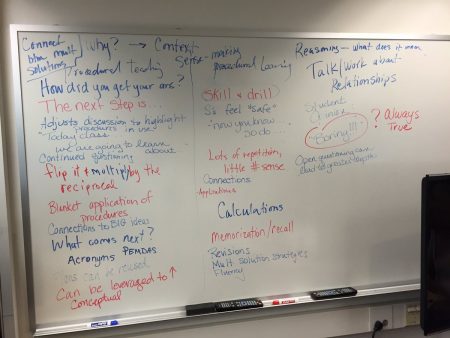It might seem obvious, or maybe you have never even thought about it but…..
You do need to be organised in Primary teaching
In fact I would go as far as to say that you need to be more organised in Primary teaching than you do in Secondary!
So why would I say that and what’s the reasoning behind the statement?
In truth primary teaching is a far more involved area of the professions due to the following:
- The age and dependence of the children
- The initial development of learning and learning skills
- Primary teachers have the whole curriculum to teach
- The complex factors involved in having 1 class of children for the whole year
- The size of the majority of Primary schools means that ALL responsibilities have to be managed “in house” – with limited numbers of staff. This brings with it added workload with little or no additional release time.
I am sure you could add to the list!

The bottom line is that Primary Schools are extremely busy places and this hits you the minute you walk through the door in a morning …it’s just none stop!
So why do we need to be organised and how will this help us personally?
If you had a pretty straightforward and easy going lifestyle then you could afford to be disorganised….it would be ok to muddle through the day not really knowing when or how things would pan out. If things don’t work out in whatever way then it really doesn’t matter…and more to the point it really doesn’t worry you!
However, few of us have that sort of relaxed lifestyle that would allow this! Adding a Primary teachers career into our life mix has the potential for chaos not only at school but also in our home and family lives. So why is this?
Its perfectly possible to have a home life that bobbles along with partner and children all (hopefully) fitted neatly into the family unit. Slightly disorganised can work for most of the time and we can all cope with that.
However, add your job as a Primary teacher ON TOP of this and both ends of the spectrum come immediately under pressure. Suddenly home life that moseyed along quite nicely, now cannot cope in the same way as it did previously – things have to change!
Obviously the pressure comes from your Primary teaching job and the pressures can be intense as both the workload and the additional demands of Primary schools land squarely at your feet.
It’s just a minefield at school…where do you start?
In the various Headteacher jobs that I have had there were 2 things that I always bought when I started in a new job.
- A new desk chair….and it had to be a good one!
- A large whiteboard for my office wall.
The reason for the chair is obvious, however the whiteboard was just as much of a necessity.
It sort of looked like this (but not the same content!)

The thing was, I knew that I needed to be organised – and an important way for me to deal with things was to put them right in front of my nose where I couldn’t miss them. Some things used to stay up there for months if there was no urgency, whereas others would get dealt with almost immediately and then rubbed out. It was also the place where I could put my thoughts and ideas about things.
This was my base organisation and it worked for me in my situation.
But what can work for you when you feel swamped and don’t know where to start?
Wherever you are; when the situations seems out of control, it’s important to actually make a start to take back some form of control. It does not have to be everything (which would just be unmanageable!) but choose something that you can work on and is achievable in a short time – what we aim to do is get an early win under our belt!
Here’s a sort of checklist:
- Split your list into Home and school
- Make a summary list of the things that you think are causing you problems
- Identify areas where one side may be affecting the other (home/school)
- If necessary subdivide these into individual components
- Put things into an order of priority…those that are urgent and those that can hang around for a while until you get to them.
Let’s start with the HOME side of the list…
The first aspect to consider is how flexible things are at home and is it possible to make any slight adjustments on such things as….
- Mealtimes
- Bath and bedtimes for younger children
- What time you have to leave in the morning and perhaps how children get to school (possibly even the use and cost of before and after school clubs or maybe Nursery vouchers etc)

With the school side of things being far less flexible then maybe some slight changes on the home schedule may avoid difficult clashes and demands on your time and focus. Of course this may not be possible but do look at this first and if yes then great…if no then you will have to impose some flexibility onto the school side!
Some years ago I had a teaching job in Birmingham and lived about 45 miles away near to Stoke on Trent. As such I used the train in the winter and then just to make life interesting had a big Honda motorcycle for the summer months! (a great way to start and end the day)
My return home times were 6.00 p.m on a normal day and 7.00 p.m if there were meetings and from the minute I walked through the door we started on bath and bedtimes…yes literally, I took my coat off and straight into it all!
After the boys were bathed and into bed then we cooked and finally sat down later….I decided that NO, I had no intention of starting marking and planning at this time of night – so the flexibility had to come from the school side of things.
My solution was this:
- I marked books on the train on the way home
- I planned for the day on the train on the way to school
Yes I had to focus and get on with things, but it worked for me from a school perspective but more importantly from a home one as well.
(On the bike I got home much much earlier so I could get both done)
Having looked at the word count it’s apparent we need to spin into a 2 part article here, so in part 2 we will look at how we can start to apply this approach to School; where to start and how to begin to put things into action.
Charles


